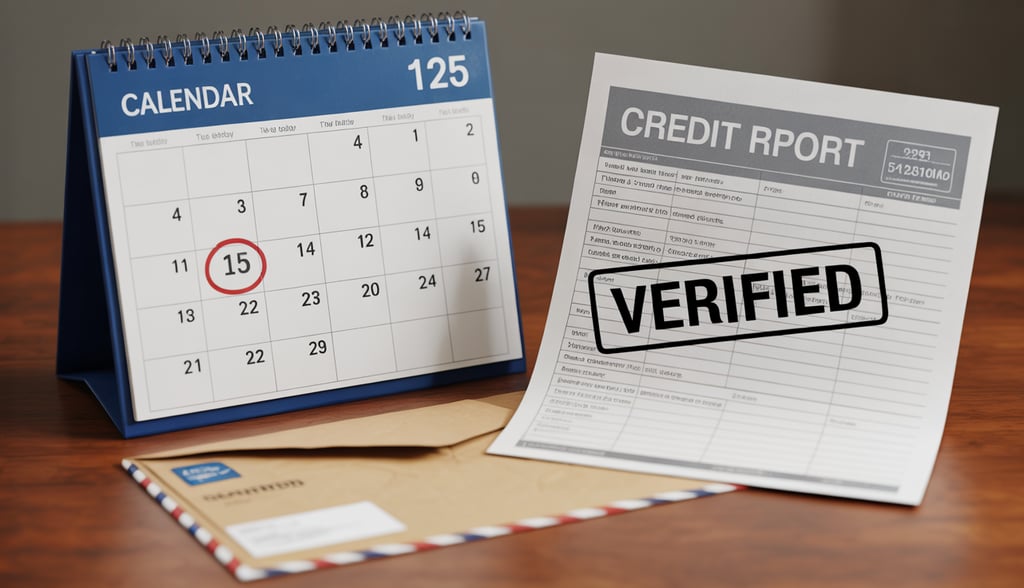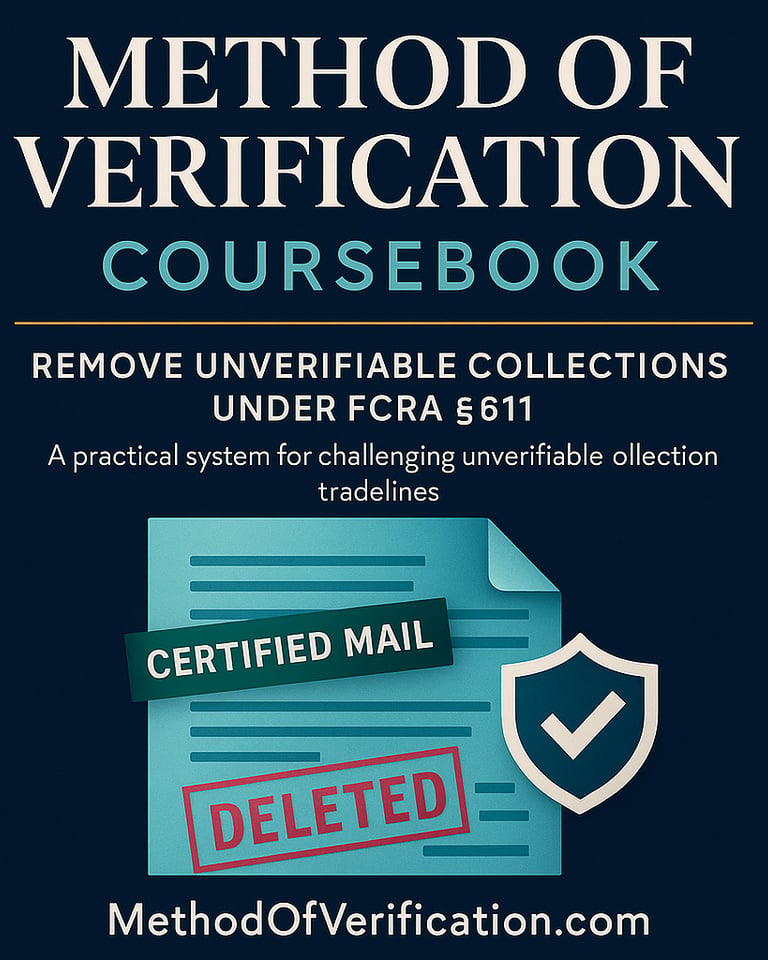Method of Verification After a “Verified” Result: What Section 611(a)(7) of the Fair Credit Reporting Act Actually Requires in 15 Days
When credit bureaus respond “verified,” that doesn’t mean the debt is truly proven. Under Section 611(a)(7) of the Fair Credit Reporting Act, you have the right to request the method of verification — and the bureau must respond within 15 days. This post explains what that means in plain English, how to use it to challenge unverifiable accounts, and why the 15-day rule gives you real leverage to clean up your credit report.
Jimmy Skirrts
9/29/20252 min read


Method of Verification After a “Verified” Result: What Section 611(a)(7) of the Fair Credit Reporting Act Actually Requires in 15 Days
Most people who file a credit dispute get the same response back: “We have verified this account as accurate.” It feels final, like the credit bureau has done its homework. But what does “verified” actually mean? And what happens when you demand the proof behind it? That’s where the Method of Verification comes in — and the Fair Credit Reporting Act sets strict deadlines for it.
What the Fair Credit Reporting Act Really Says
Under the Fair Credit Reporting Act, Section 611(a)(7), you have the right to request the description of the procedure used to verify a disputed account. In simple terms: you can ask the credit bureau to explain exactly how they decided the item was correct.
Even better, the law sets a timeline: once you make that request, the bureau has 15 days to provide the details. Not a vague response, not a one-liner, but a genuine description of the steps they took.
Why the 15-Day Timeline Matters
Those 15 days are critical. If the credit bureau cannot or will not provide the details within that window, the strength of their “verified” response falls apart. That means you have leverage — because the law doesn’t allow unverifiable information to stay on your credit report.
Think of it this way: if a teacher gave you a failing grade but refused to show you the test answers, would you accept it? Of course not. The Fair Credit Reporting Act is written to stop that exact kind of behavior by credit bureaus.
A Real Example
Consider Sarah. She disputed a medical collection she didn’t recognize. A month later, the credit bureau sent back the usual: “Verified.” But Sarah wasn’t convinced. She sent a Method of Verification letter under Section 611(a)(7), demanding to know how the account had been verified.
The credit bureau responded with a generic line: “We verified this account with the creditor.” That wasn’t good enough. They missed the 15-day window and never produced details like dates, names, or documents. Because of that failure, Sarah pushed back — and the account was deleted.
Why Consumers Miss This Step
Most people stop after the first dispute because they think “verified” is the end of the road. But the Method of Verification request exists precisely for this situation. It forces the credit bureau to move beyond their quick electronic system and actually show their work. And if they can’t, the law says the information should not stay.
How You Can Use the Method of Verification
If you get a “verified” result, don’t give up.
Send a Method of Verification letter immediately.
Track the 15-day deadline closely.
Review their response carefully — vague answers are not compliance.
The Next Step: Get the Tools That Work
Knowing your rights is powerful, but having the right tools makes the difference. That’s why I created the Method of Verification Masterclass and Letters Pack.
Inside, you’ll learn:
How to time your Method of Verification requests for maximum impact.
The exact language credit bureaus cannot ignore.
Letter templates designed by experts, ready for certified mail.
If you’ve ever felt stuck with a “verified” result, this system shows you what to do next. The law is already on your side — now it’s time to use it.

